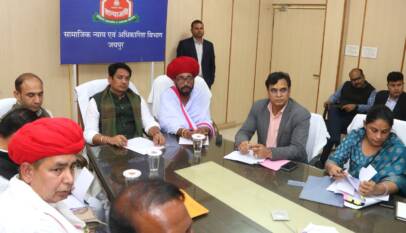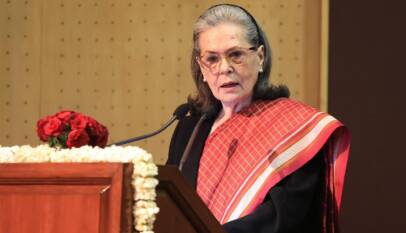As UP gears up for a good mango harvest, experts urge farmers to take special care
Lucknow : India is the world’s largest producer of mangoes, accounting for nearly 60% of global production — and Uttar Pradesh plays a leading role, contributing nearly one-third to the country’s total output. Given this significant share, mangoes hold a special place in the state’s agricultural economy.
Under the leadership of Chief Minister Yogi Adityanath, the Uttar Pradesh government has launched several initiatives to support mango growers, collaborating with agricultural scientists and experts from across the globe, particularly Israel. These efforts have not only improved productivity but also enhanced fruit quality and boosted exports.
This year, the mango crop in the state shows promising signs of a good yield. The fruit size is significantly better, which is expected to make up for previous shortfalls. The crop is nearing full maturity, with around 75% of the desired fruit size already achieved. The mangoes are expected to hit the market in about three weeks.
At this crucial stage, experts stress the importance of proper care to maintain the quality of the harvest and ensure farmers secure good prices in the market.
Dr. H.S. Singh, an insect expert from the Central Institute for Subtropical Horticulture (CISH), Rahmankheda, has advised mango farmers to stay cautious as temperatures rise. He explained that farmers who have bagged their mango fruits are safe, but those who haven’t are at risk from two major pests: the “dudwa” (fruit borer) and the “cutter” insect (semilooper). These pests become more active as the weather gets hotter.
According to the Meteorological department, heat levels are expected to rise further, especially during the upcoming “Nautapa” (a 15-day extreme heat period starting May 18). If these pests are not controlled early, their numbers could increase rapidly, making them difficult to manage later.
The fruit borer mostly lays eggs between two closely growing mangoes or on clusters. Its larvae scratch the mango skin, leaving marks that reduce the fruit’s market value. The semilooper, on the other hand, lays eggs on the stems or surface of developing mangoes. Its larvae also damage the fruit by making holes, which again affects the price.
To control these pests, experts recommend using a pesticide called lambda cyhalothrin (1 ml per litre of water). However, some farmers say it is not very effective. In response, a few farmers have developed their own formula by mixing emamectin benzoate (0.35 grams) with lambda cyhalothrin (0.5 ml) per litre of water, which has shown better results.
When affected by wind, rain, or pesticide spray, semilooper larvae hang from the tree using a fine thread from their mouth. Some fall and die, but larger ones often survive and climb back up, continuing to damage the fruits.
Farmers are advised to spray insecticides especially around mango clusters and on branches that bear fruit. They should also spray the trunk and lower branches so that any larvae trying to climb back up are killed.
For farmers planning to export mangoes, only label-approved pesticides should be used. Using unapproved chemicals may create problems in exporting the fruit. Since harvesting is still about a month away, experts believe pesticide residues will disappear by then, and the fruit can be safely sent to the market.
PM Modi Presents Russian President Putin with Curated Gifts Reflecting India’s Culture and Heritage
New Delhi, Dec 2025: During the two-day visit of Russian President Vladimir Putin to India…




















